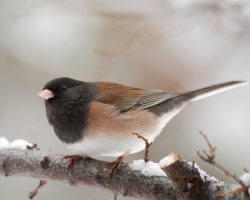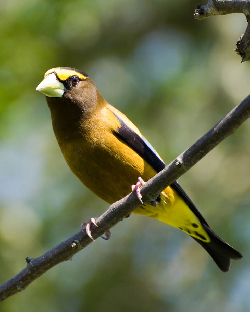
Courtesy & © Shannon Rhodes, Photographer
Author Roald Dahl uses the word petrified as being motionless, stonelike, frightfully frozen, as he describes Charlie Bucket’s puzzled grandparents and his own excitement about a trip to Mr. Willy Wonka’s Chocolate Factory. Utah’s San Rafael Swell rates as one of the most wonderful places in my world, and not because of an abundance of chocolate or gleeful oompa loompas. Beneath the towering spires on my bucket list-quest to see desert bighorn sheep in the wild, I’ve wandered among the petrified wood fragments scattered in the desert sand, so many that I almost forget to appreciate them for what they are. Petrified wood is a fascinating fossil, colorful evidence that what is now desert was once lush forest. We’ve set aside places like Petrified Forest National Park in Arizona, and Utah’s own Escalante Petrified Forest State Park boasts something like five and a half million tons of fossil wood.
When I adventure through and research Utah’s geologic history, it makes sense that the Chinle layer is a major host rock for petrified wood and uranium in the San Rafael Swell. Let’s go back in time to find out why: Over 100 million years ago, an ancient sea covered much of Utah. The San Rafael Swell was a large island where tall conifers lined its riverbanks and dinosaurs slogged through its swamps. Evidently, as understood by radiation specialist Ray Jones in a 1997 Deseret News feature titled “Hot Spot,” “Uranium isotopes dissolved in water tend to bond chemically with decaying material, like branches and logs.” Uranium prospectors in the early 1900s would follow petrified branches in the San Rafael Swell to uranium ore-bearing larger stumps buried with almost Geiger-counter precision. It’s no wonder that uranium mines dot the hills and debate continues about mineral resource rights in the area.

Courtesy & © Shannon Rhodes, Photographer
In “Petrified Wood: Poetry Written by the Earth” released by the Myanmar Geosciences Society, I learn there are sacred shrines erected in Thailand’s petrified forests attracting visitors praying for protection. Thai legend states that touching petrified wood will give a person long life. Charles Darwin also mentioned his fascination with prehistoric plants and upright fossilized tree stumps in his naturalist journals during his expeditions, and we know he gathered and catalogued specimens. It may be bad luck, however, to move a petrified fossil from where it lies, a superstition shared by many Escalante Petrified Forest State Park visitors who have ignored the “leave only footprints, take only photographs” warnings. It seems that the park rangers receive packages from petrified offenders returning the fossil shards with apologetic notes, wishing they’d just admired the artifacts in their natural Utah settings. I’ll admit that, had I been able to lift the massive specimen I stumbled upon while I was Behind the Reef this spring, I might have been tempted to take it home. The magic for me, though, is imagining a dense forest once where cactus and rabbit brush now thrive. Whether one uses the word to mean frozen as stone from fear or geologic processes over time, and whether one is searching for uranium or a glimpse into prehistoric biomes, petrified wood is a symbol of long-lasting wonder.
I’m Shannon Rhodes, and I am wild about petrified Utah.
Credits:
Images: Courtesy & Copyright Shannon Rhodes, Photographer
Audio: Courtesy & ©
Text: Shannon Rhodes, Edith Bowen Laboratory School, Utah State University https://edithbowen.usu.edu/
Additional Reading Links: Shannon Rhodes
Additional Reading:
Ash, Sidney. (August 2003). The Wolverine Petrified Forest. Utah Geological Survey. https://ugspub.nr.utah.gov/publications/survey_notes/snt35-3.pdf
Bartsch-Winkler, Susan, et al. (1990). Mineral Resources of the San Rafael Swell Wilderness Study Areas, including Muddy Creek, Crack Canyon, San Rafael Reef, Mexican Mountain, and Sids Mountain Wilderness Study Areas, Emery County, Utah. U.S. Geological Survey Bulletin 1752. https://pubs.usgs.gov/bul/1752/report.pdf
Bauman, Joe. (Nov. 26, 1997). Hot spot. Deseret News. https://www.deseret.com/1997/11/26/19347933/hot-spot
Gordon, Greg. (2003). Landscape of Desire. Logan, Utah: University Press of Colorado. https://muse.jhu.edu/book/10431/
Hollenhorst, John. (May 26, 2014). Fossil-theft phenomenon has petrified forest visitors returning ‘keepsakes.’ KSL News. https://www.ksl.com/article/30052683/fossil-theft-phenomenon-has-petrified-forest-visitors-returning-keepsakes
Htun, Than. (March 6, 2020). P. Wood (Ingyin Kyauk): Poetry Written by the Earth. The Global New Light of Myanmar. https://www.gnlm.com.mm/petrified-wood-ingyin-kyauk-poetry-written-by-the-earth/
Mickle, D. G. et al. (1977). Uranium favorability of the San Rafael Swell Area, East-Central Utah. https://www.osti.gov/servlets/purl/5292653
Rawson, Peter and Aguirre-Uretta, M. (2009). Charles Darwin: Geologist in Argentina. https://www.geolsoc.org.uk/Geoscientist/Archive/October-2009/Charles-Darwin-geologist-in-Argentina
Van Wyhe, John. (2002). The Complete Work of Charles Darwin Online. (https://darwin-online.org.uk/) https://darwin-online.org.uk/content/frameset?viewtype=side&itemID=NHM-408865-1001&pageseq=1
Viney, Mike. (2015). The Anatomy of Arborescent Plant Life Through Time. https://petrifiedwoodmuseum.org/PDF/AnatomyVineyRevOct2013.pdf




